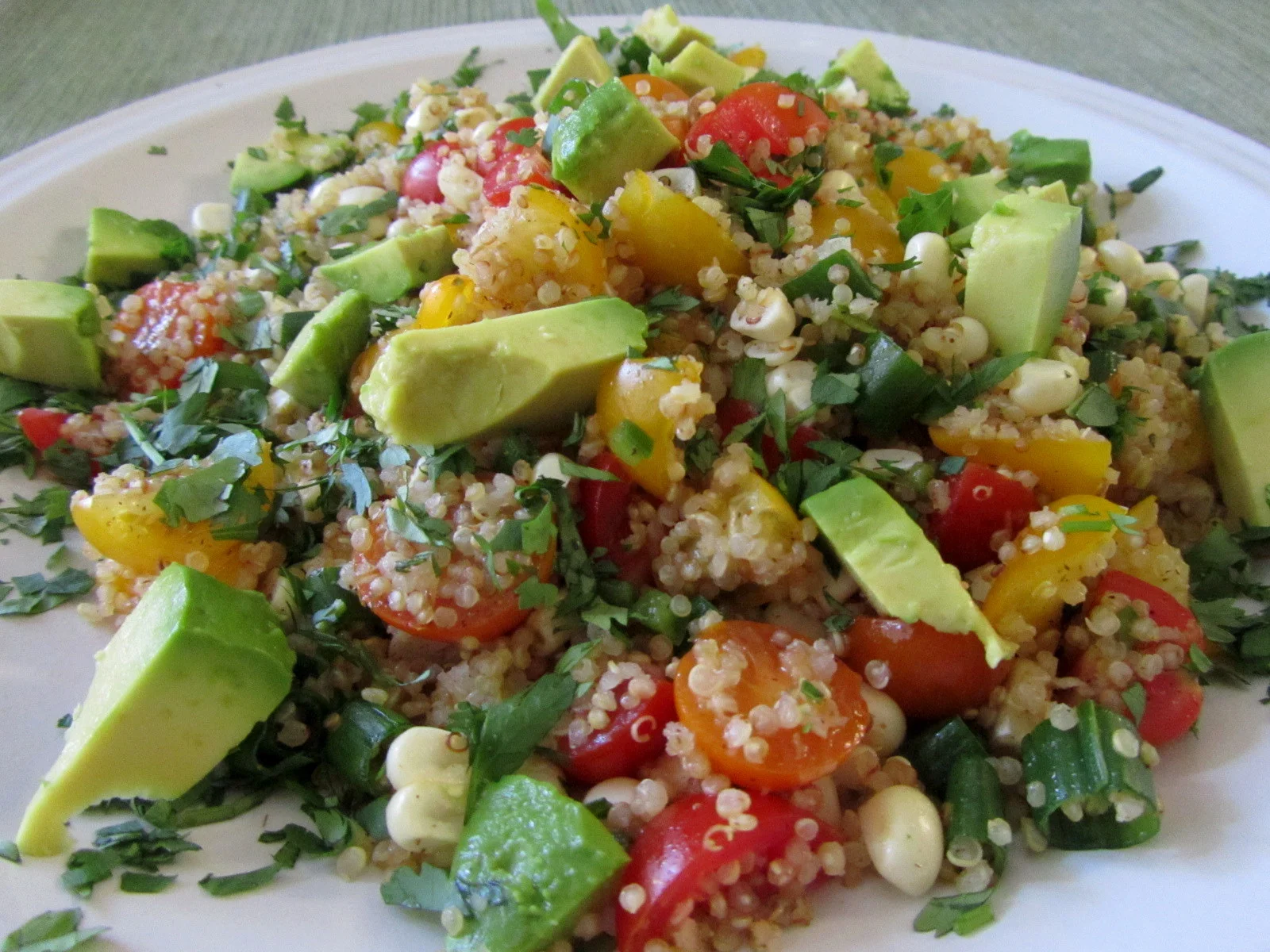If you haven’t already met, allow me to introduce you to quinoa (pronounced keen-wa). You probably already know quinoa at least by name, even if you have not cooked with it yet. Quinoa is a seed from the plant Chenopodium in the family Amaranthaceae. Grown in South America throughout the Andes mountain range, it has been cultivated for nearly 4,000 years. However, its global popularity, particularly in the US, has only developed in the last 25 years or so.
Quinoa seeds have a coating of bitter tasting saponins used to protect the plant while growing and which also used by some people as soap for washing clothes. When I first started cooking with quinoa, about 18 years ago, the seeds needed to be rinsed before cooking in order to eliminate the bitter taste. Once cleaned, quinoa has a mild flavor, so it’s easy to make it taste great with the right combination of foods and seasonings. These days, the majority of it has been processed after harvest to remove this coating and make cooking easier.
We are a nation of food fads. The high protein/low carb fad is in full swing, which makes this seed ever-coveted for its 14 grams of protein per serving and its low carbohydrate count. It is also valued for its nutrient composition, as and is considered a “superfood”. Quinoa has high levels of essential amino acids like lysine, a decent amount of calcium, magnesium, phosphorous and iron, a healthy dose of heart healthy oleic acid and omega 3 fatty acids, as well as antioxidants. It is a good source of dietary fiber and is also gluten free.
South and Central Americans have used quinoa to maintain good health as a staple in their diet for generations. Unfortunately, as its popularity has increased in recent years, the health of the farmers and locals suffers. As a result of its high demand, the necessity to produce it for market prevents many of the same people growing it from eating it themselves. When purchasing quinoa, try to find brands distributed by a company with fair trade practices. Like any fragile imported crop, we should eat it with awareness and conscientiousness about where it comes from and use it somewhat sparingly. In fact, I am almost hesitant in my promotion of quinoa, but its health benefits are undeniable.
Quinoa cooks up in about 15 to 20 minutes. Here is a cool and refreshing summer salad recipe made with fresh vegetables and the beloved quinoa.
Ingredients:
2 cups Quinoa
4 cups Water
1/3 cup red pepper - cut into bite-sized pieces
2 carrots - cut into bite-sized pieces
2 celery stalks - chopped
10 spears of asparagus - raw and chopped
1 yellow squash - cut into bite-sized pieces
2/3 of a zucchini - cut into bite-sized pieces
½ cup red cabbage - cut into bite-sized pieces
¼ cup scallions - chopped
1-2 tbsp fresh basil (or cilantro or parsley) - chopped
½ cup red radish - cut into bite-sized pieces
Raw pumpkin or sunflower seeds (soak 8 hrs, drain and dehydrate )
Lemon Dressing:
1/2 Cup + 1-2 tbsp. olive oil
1 tbsp. Umeboshi plum vinegar
1 tsp. dijon mustard
½ clove garlic - grated, minced, or pressed
¼ - 1/3 cup lemon juice
Instructions:
Place quinoa in saucepan with water. Cover. Bring to a boil. Let boil for one minute then turn to simmer. Simmer 15 minutes.
Thoroughly combine dressing ingredients together in small bowl. Gently mix together vegetables, seeds, and cooked quinoa in another bowl. Pour dressing over and toss to coat.

